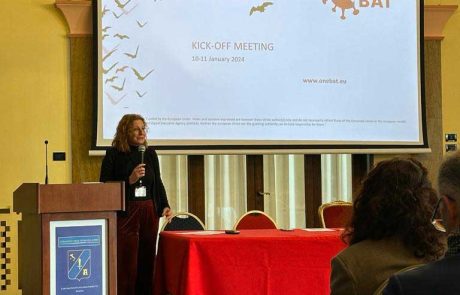10 January 2024
On January 10th and 11th, 2024, a significant event unfolded at the esteemed Palazzo Zacco in Padua – the kick-off meeting of the OneBAT project. Under the official banner of “One Health approach to understand, predict and prevent viral emergencies from bats” this two-day gathering was meticulously orchestrated by the Istituto Zooprofilattico Sperimentale delle Venezie (IZSVe), under the leadership of Dr. Paola De Benedictis. Notably, representatives from all international partners comprising the consortium, which will spearhead this research initiative over the next 3 years, were actively engaged in the proceedings.
The primary aim of the OneBAT project is to delve into the triggers behind viral spillover from European bats to humans or domestic animals. The investigation zeroes on the bat Miniopterus schreibersii and viruses considered particularly relevant in terms of zoonotic and pandemic potential, namely filoviruses, coronaviruses, and lyssaviruses. The overarching objective is to study, altogether, the bat and the viruses to elevate our understanding on all the steps that might lead to the emergence of a new infectious disease in humans, as opposed to the simple notification of viral genomes in animals that might pose a risk just because they are somehow similar to human pathogens. Simultaneously, the project seeks to establish a network and a robust methodological platform for conducting ecological and virological investigations tailored on different wild animals and viruses, to be able to tackle the threat associated with a still unknown Disease X.
This ambitious endeavor, financially underpinned by the European Union through the Horizon Europe Program, boasts a commendable duration of 3 years and a substantial financial injection of 2,122,287.50 Euros. Notably, the collaborative effort involves the active participation of 13 partners hailing from 7 different countries, showcasing a truly international and interdisciplinary approach to tackling the complexities of viral emergence from bats and its potential consequences on public health.












